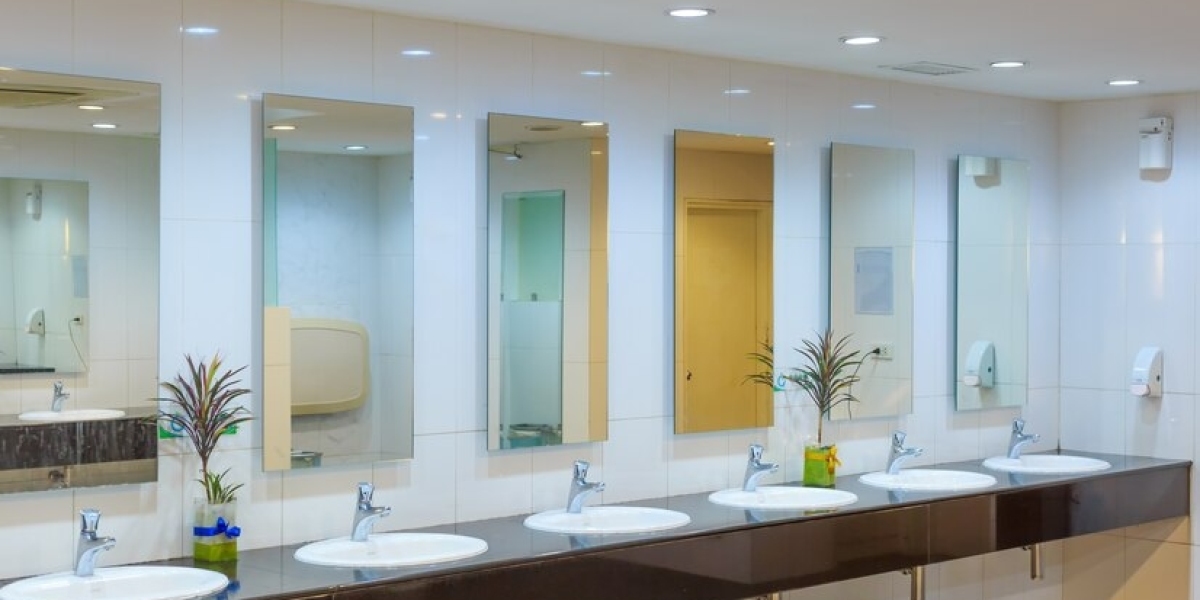Bathroom mirrors have come a long way from their humble beginnings as simple reflective surfaces mounted on walls. Today, they are not just functional necessities but also stylish design elements that can transform the look and feel of a bathroom. The evolution of bathroom mirror design is a fascinating journey that reflects changes in technology, design trends, and societal norms. In this article, we will explore the history and evolution of bathroom mirror design, from their utilitarian origins to the stylish and innovative mirrors of today.
The Early Days: Reflecting on Necessity
The history of mirrors dates back thousands of years, with early examples made from polished obsidian and other natural materials. However, it wasn't until the 19th century that mirrors began to find their way into bathrooms in a form that we would recognize today. These early bathroom mirrors were typically small, oval-shaped pieces of glass mounted on a wooden or metal frame. They served a purely functional purpose, allowing people to see themselves while grooming or getting ready for the day.
During this time, mirrors were considered a luxury item and were often found only in the homes of the wealthy. The manufacturing process was labor-intensive, and glass was relatively expensive, making mirrors a status symbol. As a result, bathroom mirrors were relatively small and sparingly used.
The Rise of Mass Production: Larger and More Accessible
The late 19th and early 20th centuries saw significant advancements in mirror production techniques. Mass production made mirrors more affordable and accessible to a broader range of people. As a result, bathroom mirrors began to grow in size, and more homes started to incorporate them into their bathrooms.
One common design during this period was the medicine cabinet mirror. These mirrors were often recessed into the wall and included storage space behind them. This design was not only functional but also space-saving, making it popular in smaller bathrooms. It also contributed to the notion that bathroom mirrors should be practical and unobtrusive.
The Mid-Century Modern Movement: Form Meets Function
The mid-20th century brought about a design revolution that influenced all aspects of interior design, including bathroom mirrors. The Mid-Century Modern movement emphasized clean lines, simplicity, and the integration of form and function. This shift in design philosophy had a significant impact on bathroom mirror design.
During this period, bathroom mirrors began to take on more unique shapes and designs. Oval and rectangular mirrors with sleek, minimalistic frames became popular. The focus was on creating mirrors that not only served their practical purpose but also added an element of style to the bathroom. Mirrors were no longer mere afterthoughts; they were integral parts of the overall design scheme.
The Age of Technology: Lighted Mirrors and Smart Features
As technology continued to advance in the late 20th century and into the 21st century, bathroom mirror design underwent another transformation. Lighted mirrors, also known as backlit or LED mirrors, became increasingly popular. These mirrors featured integrated lighting behind the glass, providing a soft and flattering illumination for grooming tasks.
In addition to improved lighting, smart features began to make their way into bathroom mirrors. These mirrors could be equipped with touch controls, Bluetooth speakers, and even built-in TVs. They transformed the bathroom mirror into a multifunctional device, capable of providing entertainment, information, and a personalized grooming experience.
Reflecting Contemporary Design Trends
Today, bathroom mirror design is a reflection of contemporary design trends and the desire for personalized, stylish spaces. There are several key trends shaping the evolution of bathroom mirrors in the 21st century:
Frameless Mirrors: Frameless mirrors create a sleek and modern look in bathrooms. They are often mounted flush with the wall, giving the impression of a floating mirror. Frameless mirrors are versatile and can complement various design styles.
Customization: Homeowners are increasingly seeking mirrors that are tailored to their specific needs and preferences. Custom mirrors can be designed in various shapes, sizes, and finishes to match the overall aesthetic of the bathroom.
Smart Mirrors: Smart mirrors have continued to evolve, with features like integrated voice assistants, customizable LED lighting, and even temperature and humidity sensors. These mirrors offer a blend of functionality and convenience.
Artistic and Decorative Mirrors: Mirrors are now seen as decorative pieces of art in their own right. Intricately designed frames, unique shapes, and ornate details turn mirrors into focal points in the bathroom.
Dual-Purpose Mirrors: Mirrors with built-in storage, such as shelves or cabinets, help maximize space in smaller bathrooms while adding a functional element to the mirror's design.
Environmental Considerations: Sustainability is a growing concern, and bathroom mirror design is following suit. Manufacturers are using eco-friendly materials and energy-efficient lighting in their mirror products.
The Future of Bathroom Mirror Design
As technology and design trends continue to evolve, we can expect to see even more innovative and stylish bathroom mirrors in the future. Here are some trends and developments to watch for:
Augmented Reality Mirrors: These mirrors could allow users to virtually try on makeup or clothing, helping them make more informed decisions about their appearance.
Health and Wellness Features: Mirrors that provide information about the user's health, such as body composition analysis or skin health assessments, could become more prevalent.
Sustainable Materials: Manufacturers are likely to place a stronger emphasis on using sustainable and recycled materials in mirror construction.
Integration with Smart Home Systems: Bathroom mirrors may become even more integrated with smart home systems, allowing users to control lighting, music, and other bathroom functions through the mirror.
Interactive Displays: Mirrors with touchscreens or interactive displays could offer personalized recommendations for skincare routines, workout regimens, and more.
Artificial Intelligence: AI-powered mirrors could provide personalized grooming and beauty tips based on individual preferences and facial analysis.
In conclusion, the evolution of bathroom mirror design has been a journey from pure functionality to stylish and technologically advanced pieces. These mirrors have become integral to the overall design and functionality of modern bathrooms. As we move forward, we can expect to see bathroom mirrors continue to push the boundaries of design and technology, offering even more convenience, style, and innovation to homeowners. Whether it's a frameless, customizable mirror or a smart mirror with built-in AI, the bathroom mirror of the future is set to be a reflection of our ever-changing needs and desires.
nasir rajput
3 Blog posts









